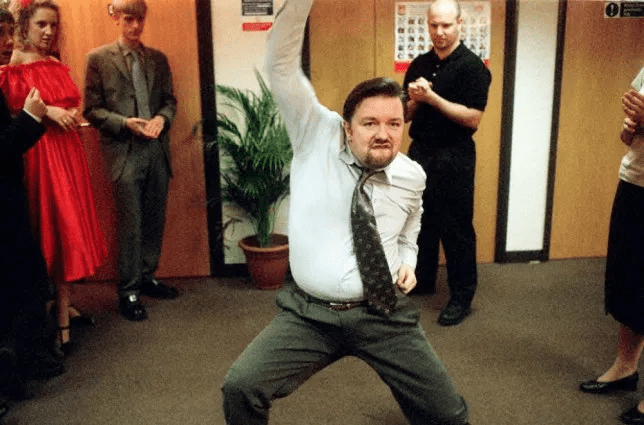
DAD-DANCING INTO IRRELEVANCE: HOW BRANDS LOST TOUCH WITH THE CULTURAL ZEITGEIST
Josh Morgan
20/02/2020
Brands are rapidly heading towards total irrelevance. How do we turn this mess around? Account Director, Josh Morgan, sets out the game plan for reconnecting with consumers.
How are we positioned to capture that ephemeral zeitgeist? That short, sharp moment where brand activity intersects with culture and doesn’t look like Dad doing the robot whilst chaperoning at your leaving dance. How well positioned are people in marketing and advertising to rise to this challenge, and to make work that is creatively resonant to a wide audience? Success stories in this field feel few and far between at the moment.
Andrew Tenzer and Ian Murray in their fantastic Empathy Delusion highlight that “people in advertising and marketing seem unable to reciprocate when it comes to what [Jonathan] Haidt describes as the ‘ethics of community”. They reveal that we are part of an industry “who are using different ethical and cultural settings to large swathes of the population”.
This is problematic. We’re expected to deliver results beyond the proverbial Soho Bubble (gross), and more often than not beyond the UK itself and on a global scale.
Orlando Wood in his equally fantastic IPA white paper Lemon. goes on to emphasise that “people have taken on entrenched political positions, and define themselves in opposition to others, with worryingly little desire to understand others’ points of view” claiming “society is brittle and dislocated”. He probes further asking if “these are conditions conducive to creativity”.
Perhaps the struggle comes from the idea that we’re self reflecting, subconsciously and (more worryingly) consciously reinforcing our own prejudices. We’re willingly tying our own shoelaces together as we try to get our industry running again.
So how do we counteract the current status quo and create an environment that is conducive to creativity in 2020?
It feels like we have three educational tasks:
The first is our empathy gap – we need to move away from our ABC1 18-34, award, trend and demographic-centric ways of thinking.
“The first rule of marketing is that you are not the customer”. We are familiar with this, but still you hear “it works for me”, chuckled off with a “qualitative analysis of one ()” sort of narrative. Stop it. Do the research, find the truth in the survey responses, in the vox pops, in the employee interviews, in the ethnography, in the social listening, in as much as you can do. Sit in the problem a bit; marinade in the fridge for x amount of as-long-as-possible. The findings shouldn’t define the creative output, but it lets you know where you are, and lets you know where you shouldn’t be. It will close your empathy gap and open your EQ. Right and wrong will become less subjective and more directed. Internal and client conversations will become more rational, less “hastily constructing plausible post rationalisations”
The second is to reeducate ourselves on the impact and value good creative work can deliver. In essence use the left brain to unleash the right brain. It “empathises, [and] can see things from two perspectives, appreciates metaphor and humour, and the sublime through awe. These things give us a sense of perspective on the world; they also make for very successful advertising”…and successful advertising is what we want, right!? We must not forget the power of wit and charm in the work we make. Have fun with it. But also build a space for it.
The third and final is to equip our clients (from the brave to the meek, bottom to the top, brand, channel, procurement, everyone) with the information and data that will let that right brain thinking flourish, and in turn deliver effective long term advertising and marketing.
We’re often quick to assume that we’re all speaking the same language; that the buzzwords, the acronyms, and the charts are a universal language that everyone understands. They’re not. Give your client the tools they need to be helpful. Likely is that they’re not being difficult or bloody-minded, more likely is that they are working in a slightly different frame of understanding and different pressures. The same applies to clients with agencies. Meet in the middle. Be a bit more empathetic and open the door to a bit of understanding. The impact will be felt in the work, in the relationship and in the process.
Here’s hoping that these three tasks aren’t too much of a pipe dream – that by closing the empathy gap, re-aiming at effective and impactful creative work, and arming our clients with the right information, we can get our industry running at high speed again. That oft-peddled Ralf Speth quote, that “If you think good design is expensive, you should look at the cost of bad design” also feels applicable to the less tangible skills in our industry. If we do not invest in solid thinking, investigation and crafting now, we will pay a much higher price for it down the line.
Empathy Delusion, Tenzer + Murray, Reach Solutions
Lemon. Orlando Wood, IPA
“The first rule of marketing is you are not the customer”, Mark Ritson, Marketing Week: shorturl.at/rI267
Rory Sutherland, Alchemy, in Empathy Delusion, Tenzer + Murray, Reach Solutions, pp 22-23
Ralf Speth, CEO, Jaguar Land Rover

